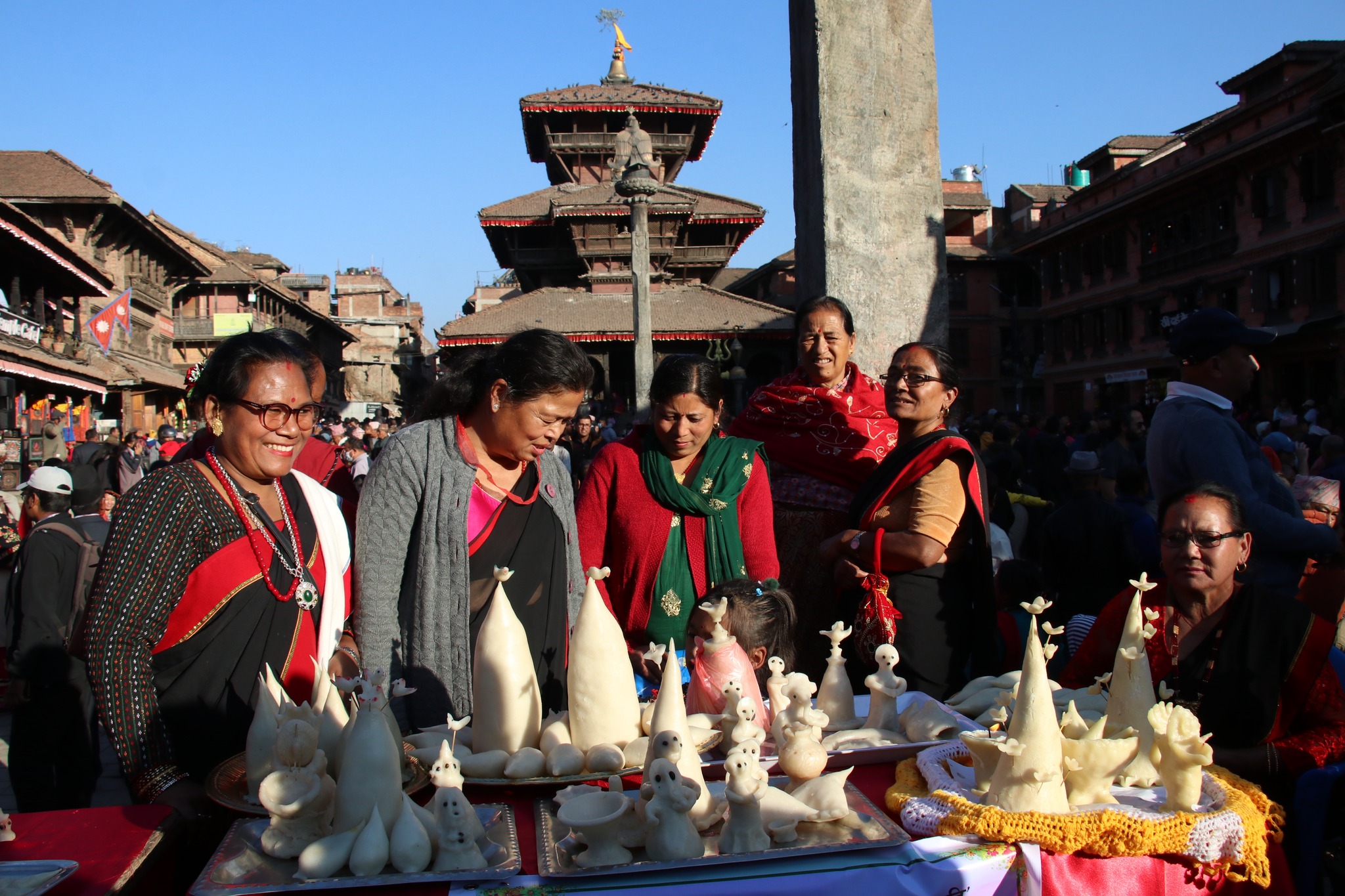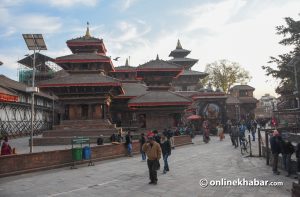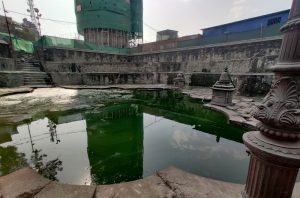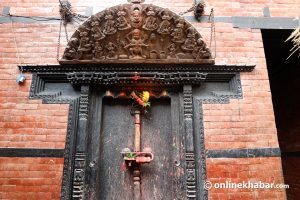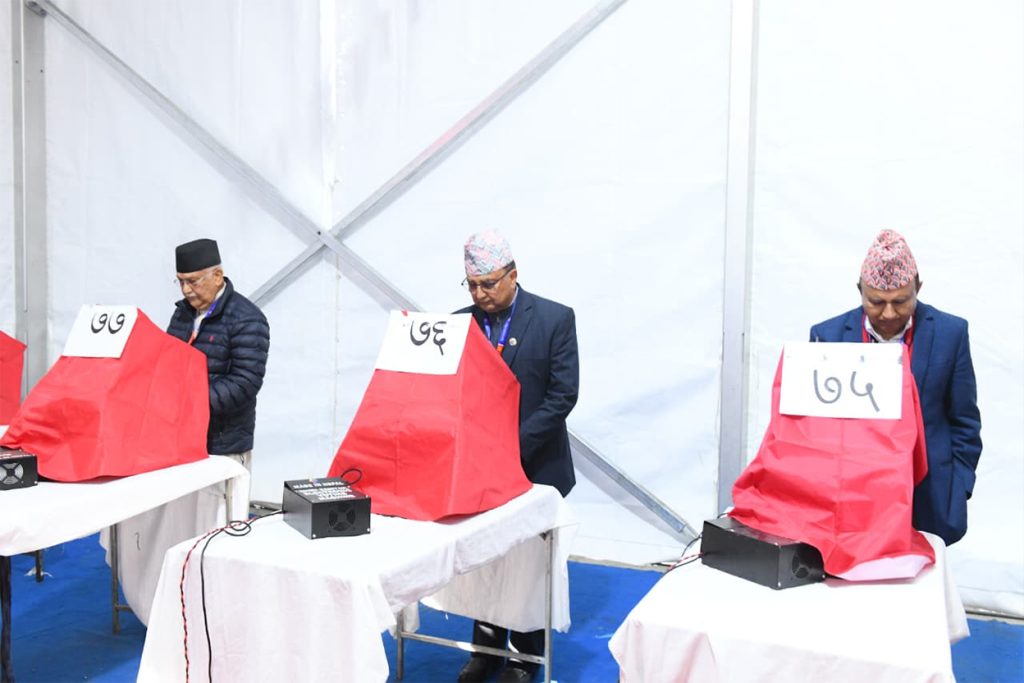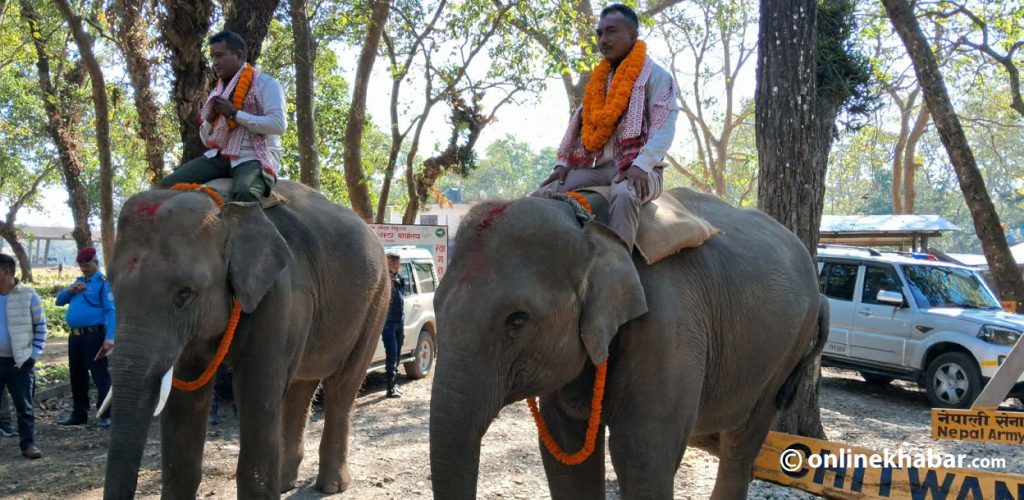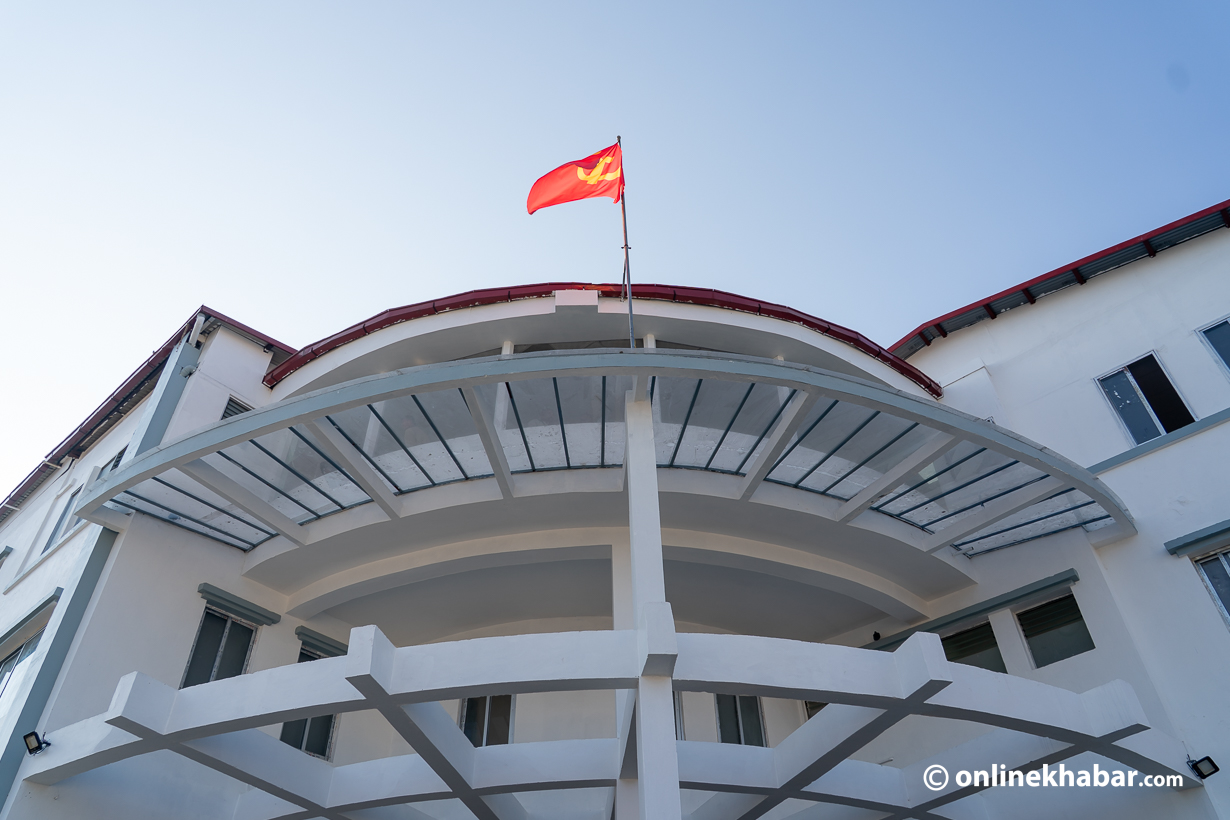
Two years ago, the earthquake severed the entire east side of Sundari Chowk. Now the area is home to the newest wing of the Patan Museum
If you roam the now renovated Sundari Chowk in Patan Museum, you see hardly any scars of previous damages it sustained. The elaborate windows and torans stand majestically bearing the glory of Patan. The walls appear without any fissure or cracks. It almost seems as if the entire square were newly built, but the glorious old charm of the chowk speaks otherwise.
Just two years ago, the devastating earthquake severed the eastern side of the Sundari Chowk. While other historical monuments still lay in broken shambles, Sundari Chowk rose to its former glory just one year after the earthquake. As of now, it is home to the newest addition to the Patan Museum, the Seamann Gallery and the Frozen Wall.
In 2006, the idea of the new wing was conceived. When the earthquake brought massive damage to the building, it delayed the completion of the new sections by nearly two years. However, this did not discourage the board of the museum and of course, the sole non-profit organisation working for renovation KVPT(Kathmandu Valley Preservation Trust). It, rather, gave them the extra boost to move ahead faster with their plans, even faster.
On October 29, 2017, the same day Patan Museum was opened to the public 20 years ago, the now furnished and renovated wing was inaugurated.
It would unfair not to acknowledge the various donors that contributed either by finds or by services to the completion of these new sections. For instance, the Austrian Government has a huge role in the altogether foundation of Patan Museum. Similarly, the German embassy, HRH Prince Charles Charity, World Monuments Fund, Nepal Investment Bank and University of Applied Arts are some of the contributors to the project.
What is most peculiar about the newest sections of the museum is the way you have to view it. You have to go barefeet as the entire section is floored with mud. This is only the second time any museum has opted for a mud floor in Nepal to reflect the ancient and rural style of the Nepali people. Most museums usually opt for telia tile that is comparatively easy to maintain and less of a hassle. But in order to let its visitors experience the real ‘Nepali way,’ the decor has been crafted in a traditional manner.
Suresh Man Lakhe, the Acting Executive Officer of Patan Museum, rightly says, ‘The palace itself is an artefact and we want our visitors to have the best experience, from admiring it to feeling its core.”
The Seamann Gallery is also a continuation of the Architecture Gallery, the initial parts display the fascinating sketches of famous architects like Bijay Basukala. The sketches are crisp with elaborate lines and luminous against the sleek walls of the museum.
From elaborate sketches of various Chaityas of Bhaktapur to ornate torans, the pictures depict them in full clarity. The sight of this wing is a breath of fresh air, where the contemporary sketches coupled with the old structure of the museum has come together to give an aesthetic experience to those who admire it. However, your attention may be diverted to an elaborate Toran hung on the south wall. The Toran originally belongs to Bisheshowr temple and is kept there for a temporary period during the renovation of the temple.

One perhaps might be most intrigued by the wall paintings, whose precise creator, purpose and date have been a matter of debate. Now peeled off and patched in some places, it was only discovered in 1995 when curious investigators peeled off a layer of dust that had accumulated throughout the years whilst the building was used by Nepal Army. The faded pictures most probably depict the stories surrounded by Krishna, as Siddhi Narsingh Malla, the creator of the palace was a true devotee of Krishna. If the speculations are truer than you can judge for yourself and speculate its hidden depiction.
Another intriguing artefact recently renovated is a beautiful Ivory window that was initially kept on the front facade of Sundari Chowk. In a frenzy of competition and rivalry, the three kings of Patan, Bhakatapur and Kathmandu even opted for lavish material as ivory to decorate their palace windows. Now repaired and ready for display, almost fifty percent of the ivory has been preserved while the rest most probably was damaged during the protests of the 1990s.

But if you roam the corridors and hallways of the palace, every sight might raise interest and questions. There’s something particular about these hallways that carries such a strong trace of art. Due to this reason, the vacant hallways of Sundari Chowk is perfect to host art exhibitions be it of paintings or sculptures of renowned artists where it will be admired by lovers of art and architecture.
Patan Museum is thus open for interested artists.
One of the finest museums in South East Asia, Patan Museum awaits interested locals who care to know about the gloriousness of Nepal’s architecture and history. There is so much to see and admire here, and so much more to understand. Many speculations are waiting to be converted to facts. Without our interest and study in historical artefacts like Patan Museum, they might otherwise just fade into history.





